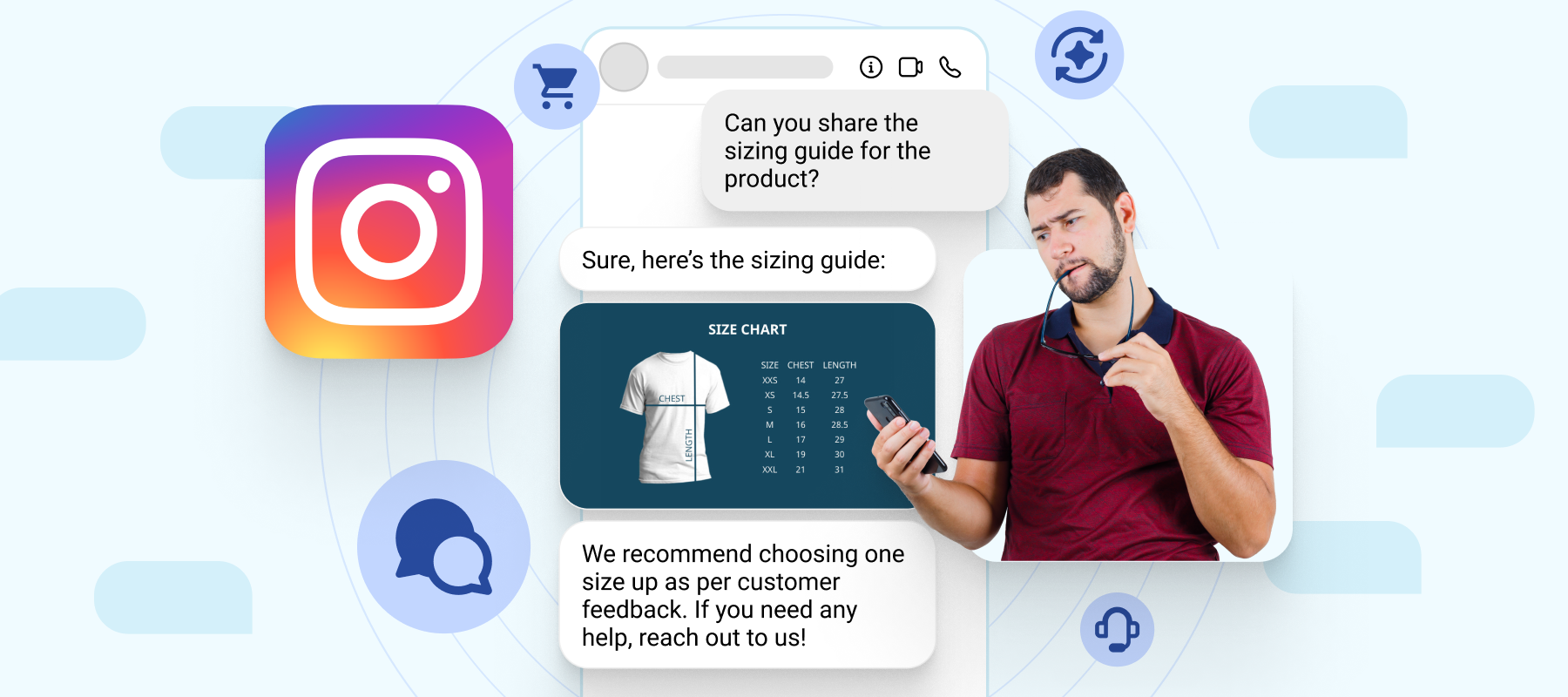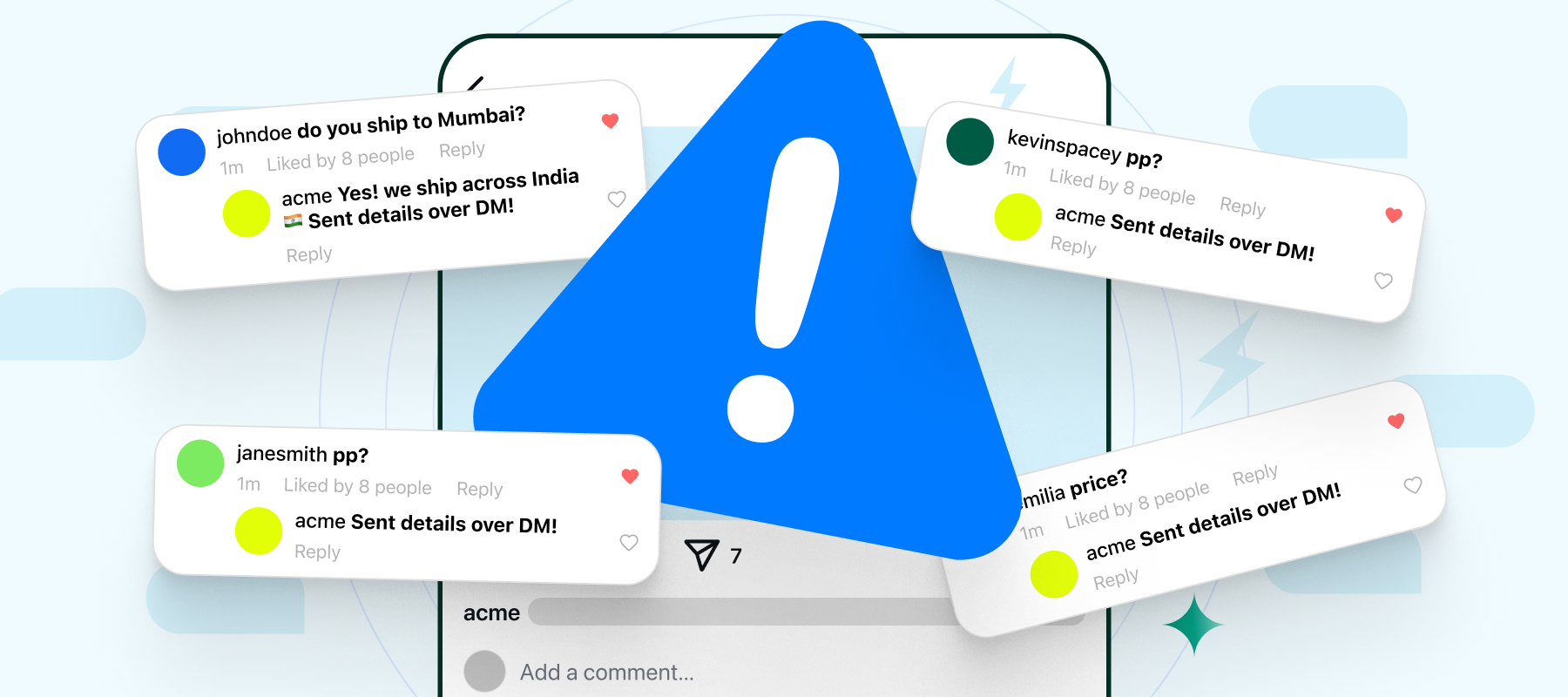Did you know 500 million people interact with Instagram Stories every single day?
That’s a massive window of opportunity.
In fact, over one in three users say they’ve become more interested in a brand or product just by seeing it in a Story. And with Stories sitting right at the top of the app, they’re the first thing people see and tap on. Instagram automation stories are quick, visual, and built for interaction.
But those interactions can add up fast, and manually replying to every story reply isn’t easy to keep up with.
This is where automation comes in. It helps you stay responsive, save time, and keep the engagement flowing without missing a step.
In this post, we’ll look at how you can automate Instagram Story replies to increase engagement.
How Instagram Story Reply Automation Works
Instagram does offer a few native tools for managing responses, especially if you’re using a business or creator account.
Through Meta Business Suite, you can set up quick replies for frequently asked questions, use labels to organize your inbox, and access limited automation. It lets you set basic auto-replies, away messages, and FAQs, but it’s more of a starting point than a complete solution.
These tools are useful for basic engagement, but they don’t fully support the kind of instant, story-specific interactions that make the biggest impact.
Third-Party Automation Tools and Chatbots
If you’re looking for something more advanced and hands-free, that’s where third-party tools come in.
Platforms like Interakt take automation a step further by integrating directly with Instagram’s API. These automation tools can automatically reply to specific keywords, story mentions, and even story sticker interactions.
They also allow you to create smart chatbot flows that feel human, not robotic, making it easier to build genuine connections without needing to respond to every single DM manually.
This means you can engage your audience at scale, send them down personalized funnels, or even drive them to take actions like visiting your site or making a purchase.
How AI-Powered Replies Improve Response Time and Engagement
AI-powered replies improve response time by instantly recognizing the context of a message and sending relevant responses within seconds.
Unlike basic automation, AI can adapt to how users interact, whether a question, emoji reaction, or story mention, making replies more natural and timely.
This instant feedback keeps the conversation flowing and increases the chances of users engaging further, instead of dropping off after their first message. By reducing wait time and delivering smarter responses, AI turns passive viewers into active participants.
Step-by-Step Guide to Setting Up Automated Story Replies
Here’s how you can set up automated replies that save time, increase engagement, and still feel personal:
Step 1: Use Instagram’s Quick Replies
If you have a Business or Creator account, Instagram’s built-in Quick Replies feature is a great place to begin. Head to your inbox, tap the “+” icon next to Quick Replies, and create predefined responses for frequently asked questions or common replies. You can use shortcuts to trigger them instantly.
For example, if people often ask about your pricing or shipping time, you can create a reply for each and use a keyword like “price” to send it faster. It’s a simple way to handle repetitive messages without typing the same thing over and over.
Step 2: Connect a Chatbot to Instagram DMs
The next step to automate replies at scale is integrating a chatbot with your Instagram account. Once connected, you can set up automated responses triggered by story interactions, such as replies, emoji reactions, polls, or questions.
The chatbot can instantly respond based on these triggers, making sure your audience gets a timely and relevant reply without you needing to be online 24/7. This reduces manual effort while keeping the interaction smooth and timely.
Step 3: Create Personalized Replies with Keywords
Start by identifying the most common interactions you receive from story replies, like questions about pricing, availability, how to order, or general interest. These give you a solid base of what your audience typically wants to know.
From there, use AI to recognize the keywords and the intent behind the messages. Whether someone asks, “Is this still in stock?” or “Can I get this now?”, the intent is the same, and AI can detect that. Based on this understanding, it can trigger personalized and relevant responses, helping you reply faster and more meaningfully.
Best Practices for Automating Story Replies
Here are some best practices for automating your story replies on Instagram:
1. Ensuring messages feel human and not robotic
Write replies in a tone that sounds natural and conversational. Use simple language, casual phrasing, and emojis where appropriate. Avoid overusing templates; slight variations in responses can make automation feel more personal. If possible, include user names or refer to what they interacted with in your story.
2. Avoiding spam-like behavior that may violate Instagram’s policies
Don’t automate replies for every single interaction. Focus on meaningful ones like story mentions or question stickers. Avoid sending repetitive or overly promotional messages, especially those packed with links or calls to action. Instagram monitors message behavior, and too many automated or identical replies can lead to restrictions.
3. Using analytics to measure engagement rates
Track how your automated replies are performing. Look at open, response, and click-through rates to see what’s working. If certain replies are being ignored, test new variations or adjust the timing. Use this data to fine-tune your approach and improve your audience’s engagement with your content.
Common Mistakes to Avoid
Here are some common mistakes that you must avoid while automating your Instagram story replies:
1. Overusing automation and missing genuine engagement opportunities
Relying too heavily on automation can backfire. Not every interaction needs an automated reply, especially when someone asks a specific question or shares detailed feedback. If everything feels automated, users may stop engaging altogether. Make space for real human responses where they matter. Use automation to handle volume, but always leave room for a personal touch when the moment calls for it.
2. Failing to update automated replies to keep them relevant
What worked last month might not work today. If your replies mention outdated offers, events, or product info, it can confuse or even frustrate your audience. Regularly review and refresh your automated messages to reflect your current content, tone, and goals. This keeps your responses useful, timely, and aligned with what your audience needs.
Conclusion
Automating your Instagram Story replies helps you respond faster, stay consistent, and keep engagement strong, even when you’re not online.
It’s a simple way to handle more conversations without losing the human touch. If you’re ready to set it up for your account, try Interakt to easily manage and automate your Instagram DMs.



